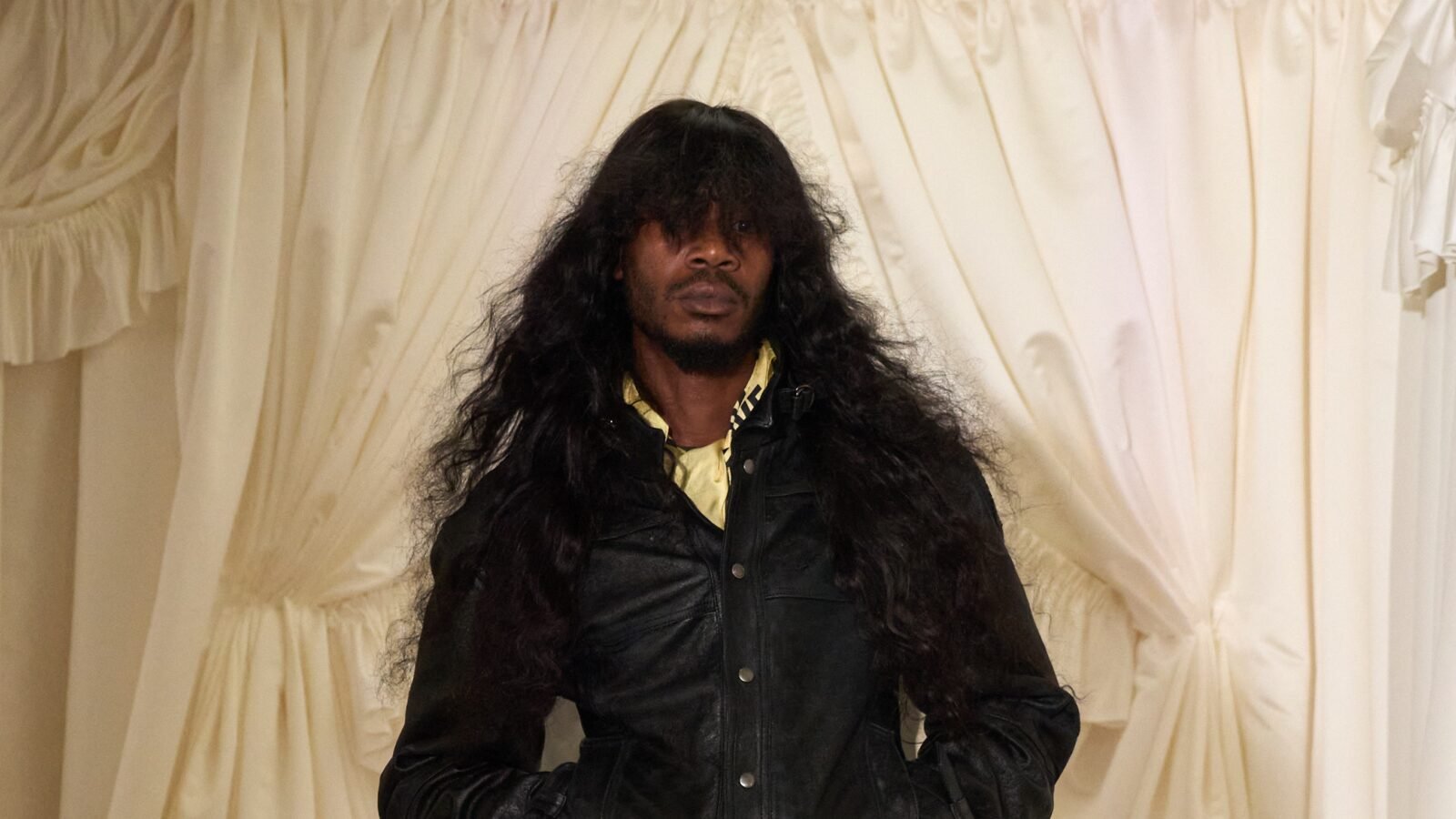When Martine Rose shows in London, it’s a big community occasion, and you can bet the venue she chooses is going to make a point. This time, she had us queuing up at a Job Centre in Lisson Grove, which she had given over to the glorification of market traders, locals who’ve been doing their own kind of job creation in the margins for generations. “They’re the sort of unseen people that make up the fabric of London’s cultural life,” she said. “Small independent designers, vintage sellers, record shops, jewelry makers, hairdressers.”
Joining in to support London’s fashion stall-holders in shambolic times (a movement with no fixed abode but millions of creative ideas), Rose invited 22 traders to occupy a floor of the semi-derelict building she’d hired. “It felt like a lovely opportunity to sort of celebrate them, and to actually make it not about me.”
But then again, of course it was all about Martine Rose. Ascending to a higher floor we entered rooms draped in white swagged and frilled curtains, waiting for what she was about to do. “It’s our kind of salon show,” she contended, although there was something already distinctly kinky about the smothering curtains. Twisting the subcultural and the off-off ‘normal’ into something we’ve never quite seen before is Rose’s super-power. She shocks and shifts silhouettes in ways that become adopted into the vernacular. In 2013–all those years ago—she was the first to do outsize shapes, and now look where we are.
So, in this collection she’s working on exactly the opposite: clothes that are tight and pulled into the body. “I guess this season we have been exploring new fitted, contemporary ideas of modern-sexy,” she said, “so we’ve created this sort of suction and tightness in strange places, which is really exciting.” Probably the clearest example is her take on a plaid shirt: a tightly front-swathed mini dress with the shirt flowing seamlessly at the back. Or all the front-tugged, layered skirts with their lightly switching kilt pleats in the back.
It’s all over the menswear, too: nipping in blazers, narrowing down electrician’s pants, shrinking leather Harrington jackets, streamlining Martine Rose-branded tracksuit bottoms to become as skinny as they can be, without turning into meggings. Where there were larger shapes—apparently ponchos—these turned out to be Rose’s salute to barber shop capes (and thus short in the back), a familiar shop-window sight in every London neighborhood.
Interspersed amongst all of this, we saw Rose up to her usual suggestive tricks, sending out waist-tied frilly aprons, lingerie lace-inserted checked boxers, and bags draped in texts lifted from vintage adult magazine personal ads. The hair—great, long head-banger manes and the odd tightly perm-curled heads—added another genius British layer of reference by Rose’s hairstylist Gary Gill.
If they struck any ’60s, ’70s or ’80s chords, that’s exactly what tied Rose’s ideas back to her first visits to Kensington Market as a child. It was a basement full of stalls catering to hippies, metal-heads, ravers, punks, and goths. Lemmy of Motorhead claimed to have sold dope there, and legend has it that Freddie Mercury worked on a stall run by Roger Taylor, before they were Queen.
“So all this,” Rose sighed, meaning both the collection and the broader event, “is our homage to Kensington Market. Lots of people started there—it was a serious part of the London subcultural scene: a place to meet, a place to find fashion, to sort of discover who you are. And now we want that sort of madness and intensity of people meeting all these independent designers again. London needs it!”









Leave a Reply